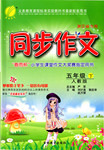16.In museums all over the world,one rule defeats all others:look but don't touch the works.But what if you can't look?Why should being blind prevent a person from appreciating works of art that are not only masterpieces,but also an important part of his or her country's cultural history?That was the question facing the Madrid's Prado museum.As with many other European museums,the Prado has worked hard over recent years to widen access to its collections.Up until now,however,blind and partially sighted people have been unable to enjoy the museum's vast collection,which includes works by Goya,El Greco and Velazquez.
The solution,the president of the museum concluded,was not simply offering audio or Braille(盲文)guides,but to create 3-D copies of key works,which visitors could touch.By inviting them to break the"no touching"rule in their new"Touching the Prado"exhibit,visually impaired (受损的)visitors can at last gain some appreciation of the works on display.
More than a year ago,then,the museum invited companies from across Spain to launch the project before choosing Estudios Durero,a Basque company specializing in the fine arts.What set them apart from their rivals was that,rather than using standard 3-D printing,they have developed a technique that they call"Didú,"which allows them to produce works that are both rich in texture (纹理)and color.Eager to keep the exact details of their process a secret,Velasco explained that it includes taking a high resolution image of a painting and then working with the blind and partially sighted members of the team to identify which details need to be emphasized.
A Madrid native,Fernandez,was born blind and is now visiting the Prado for the first time.41Yes,I can feel the texture of the skin,the short beards 2ind even the look of surprise on the men's mouths,"said Fernandez."We learned all about the great Spanish artists at school,of course,but it's only now that I can start to understand what made them special in their own unique ways."
Plans are in place to further expand the current exhibition to involve a wider sample of the Prado's collection and to make other museums and galleries more accessible to the visually impaired.28.What probably led to Tutankhamen's death according to the newest study?
28.What is the most effective solution to no touching rule?C
A.Providing audio.
B.Offering braille guides.
C.Creating touchable 3-D copies.
D.Inviting the blind to break the rule.
29.Why did Velasco choose to work with the blind?D
A.Because of their taste of art.
B.Because of their professional knowledge.
C.Because of their acquisition of printing skills.
D.Because of their ability to identify important details.
30.How did Fernandez feel when he visited the Prado?A
A.Amazed.
B.Disappointed.
C.Shocked.
D.Encouraged.
31.In which column of the newspaper do you probably find the passage?D
A.Life.
B.Education.
C.Society.
D.Technology.
分析 本文是一篇人物故事类阅读.文章主要介绍了一些博物馆的技术.
解答 28-31 CDAD
28.C.细节理解题.根据"The solution,the president of the museum concluded,was not simply offering audio or Braille(盲文)guides,but to create 3-D copies of key works,which visitors could touch."可知不接触规则的有效方法是创建可接触的3-D copies.故选C.
29.D.推理判断题.根据"Velasco explained that it includes taking a high resolution image of a painting and then working with the blind and partially sighted members of the team to identify which details need to be emphasized."可知Velasco选择和盲人一起工作是因为他们有能力识别一些重要的细节.故选D.
30.A.推理判断题.根据"I can feel the texture of the skin,the short beards 2ind even the look of surprise on the men's mouths"可知Fernandez参观了Prado之后感觉很吃惊.故选A.
31.D.推理判断题.纵览全文并根据"Plans are in place to further expand the current exhibition to involve a wider sample of the Prado's collection and to make other museums and galleries more accessible to the visually impaired.28."可知文章主要介绍了一些博物馆的技术,所以最有可能在新闻的技术部分看到这篇文章.故选D.
点评 本文是一篇人物故事类阅读.此类题型主要考查学生的细节理解和推理判断能力.细节理解题是针对文中某个细节、某句话或某部分具体内容设置问题,所以在做细节理解题时要结合原文和提干有针对性的找出相关语句进行仔细分析,再结合选项选出正确答案.在做推理判断题时不要以个人的主观想象代替文章的事实,要联系上下文根据文章事实进行合乎逻辑的推理判断.



 春雨教育同步作文系列答案
春雨教育同步作文系列答案